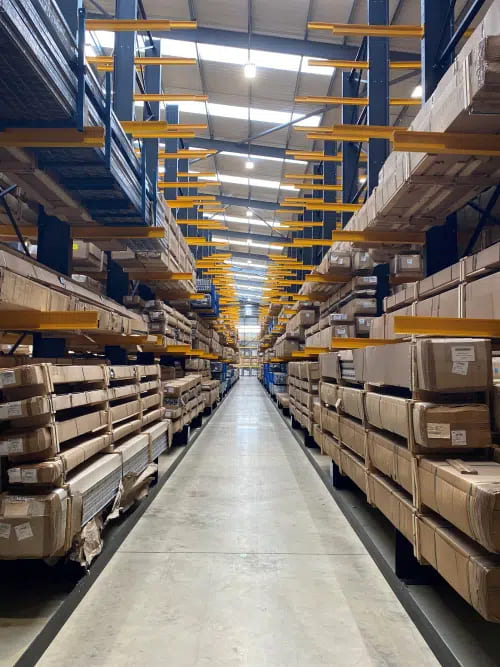
Introduction to Cantilever Racking
In the world of warehouse storage, one solution stands out for its versatility and strength: cantilever racking. This system is designed to store long, bulky, or awkwardly shaped items such as timber, steel pipes, metal sheets, or furniture. Unlike traditional pallet racking, cantilever racking is open and unobstructed, making loading and unloading quicker and safer. For businesses that handle irregularly shaped stock, this storage system can significantly improve operational efficiency.
How Cantilever Racking Works
Cantilever racking consists of a series of vertical columns with horizontal arms protruding from them. These arms act as the shelves on which products rest. The absence of vertical supports on the front side of the racking allows for uninterrupted storage along the full length of the arm. This design gives forklifts easy access from the front, making it ideal for quick handling of lengthy items that don’t fit neatly into a pallet or box.
Benefits of Cantilever Racking
One of the biggest advantages of cantilever racking is its flexibility. It can be configured as single-sided (against a wall) or double-sided (accessible from both sides), allowing businesses to maximise floor space. The arms are often adjustable, enabling storage of varying sizes of stock on the same racking system. Furthermore, cantilever racking can be built as light-, medium-, or heavy-duty, catering to different load requirements. This adaptability makes it a smart investment for warehouses looking to futureproof their storage systems.
Improving Safety and Accessibility
Cantilever racking doesn’t just improve storage capacity—it also enhances safety. With clear access to stored materials, there’s a reduced risk of damage to goods or equipment during loading. Staff are less likely to be injured by falling items, and forklifts can manoeuvre more easily, reducing the chance of collisions. Properly installed and maintained, cantilever systems help enforce organised and secure storage practices across the facility.
Ideal Applications for Cantilever Racking
This storage method is particularly beneficial in industries that deal with construction materials, metal fabrication, or furniture production. Whether it’s plumbing pipes, carpet rolls, or wooden boards, cantilever racking provides the space and support needed to store products safely without cluttering aisles. It is also widely used in outdoor settings where weather-resistant materials are stored on galvanised steel racking systems.
Customisation and Expansion
A key reason for the growing popularity of cantilever racking is its customisability. It can be tailored to the specific needs of a business—whether that’s in terms of arm length, weight capacity, or the height of the structure. As a company grows, additional bays can be added to expand the storage system without the need for a complete overhaul. This modular nature makes it cost-effective in the long run.
Conclusion
Cantilever racking is an efficient, safe, and flexible storage solution for warehouses and industrial facilities. Its ability to handle long and awkward loads sets it apart from conventional shelving options. For any business dealing with non-standard inventory, investing in a well-planned cantilever racking system can significantly improve storage performance and operational flow.
